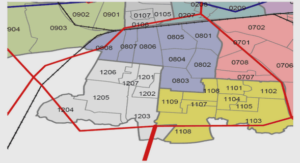The writer’s intention and the reader’s recognition of that intention establish the ground for an act of communication much claimed by Grice: “an essential feature of most human communication, both verbal and non-verbal, is the expression and recognition of intentions” (Grice 1989: Essays 1-7, 14, 18; Retrospective Epilogue). Grice’s theory of Implicature (1975, 1978) is seen as an initial attempt within linguistic theory to logically define how interlocutors comprehend seemingly unrelated utterances in discourse. Since Grice’s proposals, a focus of attention has been on inferential procedures, thought to underlie hearers’ ability to interpret and coordinate linguistic and non-linguistic information in the comprehension process. Dan Sperber and Deirdre Wilson, Relevance Theory (Sperber and Wilson 1985, 1986, 1995, 1998, 2002, 2007) is a more recent account of human communication, grounded within a general view of cognition. Relevance Theory claims to be a theory of communication, putting forward a hypothesis concerning how speakers use and how hearers process language.
Definition of Terms
Style vs. Stylization
Historically style has undertaken a very long voyage and has undergone a number of transformations. It has been defined in as many different ways as its different stops. During the Antiquity, it functioned as a rhetorical concept. It kept this function until the 19th century when it became a literary concept and in 20th century, it ended up as a principle of formal categorization, classification and register.
For the Hermeneutics , it is the symptom of the author’s world’s vision; this equates the phenomenologist view wherein style is but a revelation of being as the thinking subject is inseparable from the object it intends. Classicism sees style as synonymous with excellence or artistic quality of high distinction produced by careful attention to traditional forms while it results from the spontaneous overflow of powerful feelings according to the Romantics .
The traditional variationist paradigm of sociolinguistics considers style as a direct behavioural manifestation of the linguistic system in a community; Style is then defined as attention paid to speech (Labov, 1972). For the Semiostylistics, (e.g., G. Molinié, 1986, 1993, 1998,) style means a distinctive vision of the world (1986: 201) and Textlinguistics equates style with textuality. Bally’s Stylistics of Effects, Leo Spitzer’s hermeneutic stylistics and Michael Riffaterre’s structural stylistics commonly bring back stylistic organizations to their psychological purposes: style is but the external crystallization of an internal form.
As a result, the swing of the pendulum from emotions to consciousness carries style from one definition to another: Style is “a manner of expression characteristic of an individual, period, school or nation” (Webster’s and Random House dictionary definitions.)… “it is simply the man himself” (De Buffon, G-L: 1753) … “it is the dress of thought” … “it is just dirty fingerprints” … it is “the constant form, expression, elements and qualities in the art of an individual or group of individuals” …etc.
However, a new tendency has emerged over time; Sontag posits that style of a given work of art is “… always charged with an awareness of the work’s historicity, its place in a chronology. The difference I have drawn between « style » and « stylization » might be analogous to the difference between will and wilfulness.”
Along the same line of thought, Swift advances that “Proper words in proper places make the true definition of a style.” , and that style is in fact “the principle of decision in a work of art, the signature of the artist’s will.” (ibid) .
Coupland (2001), building on Rampton’s (1995) and others’ researches, further theorizes the concept of stylization. As he constructs it, stylization refers to a more specific set of discursive practices than language styling in general, operating “in a specific mode of social action, PERFORMANCE in the strong, theatrical or quasi-theatrical sense of that term” (Coupland, 2001: 346). Stylized practices project personas, identities, and genres that involve known linguistic repertories and have well-formed socio-cultural profiles. They often link a speaker or an utterance to a speech event. Coupland explicitly defines Stylization as “the knowing deployment of culturally familiar styles and identities that are marked as deviating from those predictably associated with the current speaking context” (ibid).
Style and Stylization have become two co-existent concepts; while the former is often seen as the image of the author’s mind, the latter is considered to be the fruit of exercise. However, , the boundary between the two is still blurred and to date, the problem facing stylisticians is how to consistently define style and stylization as there is no solid foundation to determine where one ends and the other starts. Some even doubt: “Does style exist at all?” (See Gray 1969 in Miššíková (2003: 21) and Gray’s answer is a vigorous negative; style is something like “the emperor’s clothes; everyone says it is there but no one can actually see it” (Ibid).
There is no universally valid criterion for defining style. Some ‘you-know’ notions are indeed vague and illusive as they defy any kind of defining frame whatever. Style is a case in point: trying to catch its meaning in the narrow trap of a definition is in itself a trap.
There is still no definitive and satisfactory explanation of this notion in literature. Style is decorticated and placarded, packed and unpacked, constructed, deconstructed and reconstructed, modeled and remodeled, defined and redefined. No two parties seem to agree on one definition and one does not know to whom one has to pledge one’s allegiance. One is just at one’s wits’ end.
Yet, we tend to adhere to Sperber and Wilson’s view that “style is the relationship” (Sperber and Wilson 1995: 217). The relationship is firstly considered in terms of choices since “Choice of style is something that no speaker or writer can avoid” (Ibid: 218). Then, how are choices made? The whole story revolves around one criterion: Relevance.
Relevance Theory
Relevance Theory (henceforth RT), an inferential approach to pragmatics, is a cognitive theory (Sperber and Wilson (1981, 1985/1986, 1987a, 1987b, 1993, 1995, 2002, 2004) and Wilson (1998, 1999). In particular, it treats utterance interpretation as a cognitive process. Its basic claim is that what is fundamental to communication – because it is fundamental to cognition – is the pursuit of relevance. Thus, it is based on the concept of relevance which “… applies only to the recognition of speaker intentions” (Wilson and Sperber 1986b: 83) and on two principles of relevance: the Cognitive Principle of relevance (Maximization of Relevance) and the Communicative Principle of relevance (Expectation of Relevance).
Relevance
The ordinary English word Relevance is a fuzzy term. It is much used by different people or by the same people at different times and in different contexts and one cannot find out its translation in every human language (Sperber and Wilson 1995: 119). Relevance is generally defined as “the ability […] to retrieve material that satisfies the needs of the user.’’ (ibid); and any information is relevant if it has “significant and demonstrable bearing on the matter at hand’’ (Webster 2005). Sperber and Wilson believe that scientific psychology needs a concept close enough to the ordinary language of the notion of relevance as the psychological property of mental processes is roughly approximated by this notion. It is thus, adequate to call this property relevance too but in a more technical sense and now as a useful theoretical concept (Sperber and Wilson 1995: 119).
In Relevance theoretical framework, authors claim that the main principle driving successful communication is the principle of relevance. This principle is first and foremost a human intuitive power; people do have intuitions of relevance: “… they can consistently distinguish relevant from irrelevant information, or in some cases, more relevant from less relevant information.” (ibid: 119). Saracevic also states that relevance is an intuitive, primitive, ‘‘y’know’’ notion (Saracevic, 1976: 90); people understood and understand relevance similarly over time, space, cultures, and domains: “Nobody has to explain to users of IR (Information Retrieval) systems what relevance is, even if they struggle (sometimes in vain) to find relevant stuff. People understand relevance intuitively” (Saracevic, 1996: 215).
General Introduction |






